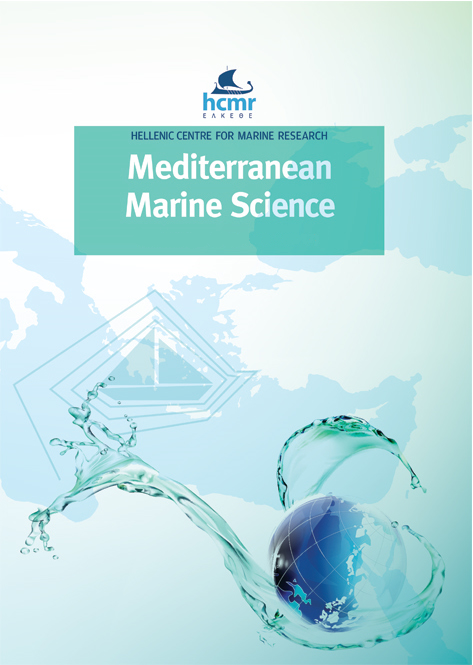Preliminary estimation of fouling organisms associated with the pearl oyster Pinctada radiata in the natural habitat of the Egyptian Mediterranean Sea
Περίληψη
In the summer of 2021, marine fouling organisms associated with the pearl oyster Pinctada radiata in the natural habitat of Miyami area, Alexandria city, were surveyed, where samples were collected by scuba diving. Eighteen shells of variable sizes were collected to investigate the fouling community’s biodiversity that settled on each shell. A total of 1674 organisms representing 106 fouling taxa were identified, weighing a cumulative wet weight of 147.98 g. The community composition consists of 52 taxa of Polychaeta, 19 species of Arthropods, 18 species of Mollusks, 5 species of Bryozoans, 4 species of Chordata, 2 species of Rhodophytes, Anthozoans, and Echinoderms, and one species for Sponge, and Platyhelminth. Species diversity, abundance, and total wet weight were variable among the eighteen studied shells, with higher recorded values on larger shells. The two barnacles (Balanus trigonus and Perforatus perforatus) were the most dominant species, followed by the Syllidae polychaete Haplosyllis spongicola, then the alien mytilid bivalve Brachidontes pharaonis, and the Dorvilleidae alien polychaete (Dorvillea similis). A comparison with other similar studies in the Mediterranean Sea was conducted. Before performing manipulative studies on how biofouling communities might affect aquaculture productivity, it is first necessary to ascertain the composition of these organisms within the desired aquaculture locations.
Λεπτομέρειες άρθρου
- Πώς να δημιουργήσετε Αναφορές
-
ABDELSALAM, K. M., & ELEBIARY, N. H. (2023). Preliminary estimation of fouling organisms associated with the pearl oyster Pinctada radiata in the natural habitat of the Egyptian Mediterranean Sea. Mediterranean Marine Science, 24(2), 338–352. https://doi.org/10.12681/mms.32735
- Ενότητα
- Research Article
Authors who publish with this journal agree to the following terms:
- Authors retain copyright and grant the journal right of first publication with the work simultaneously licensed under a Creative Commons Attribution Non-Commercial License that allows others to share the work with an acknowledgement of the work's authorship and initial publication in this journal.
- Authors are able to enter into separate, additional contractual arrangements for the non-exclusive distribution of the journal's published version of the work (e.g. post it to an institutional repository or publish it in a book), with an acknowledgement of its initial publication in this journal.
- Authors are permitted and encouraged to post their work online (preferably in institutional repositories or on their website) prior to and during the submission process, as it can lead to productive exchanges, as well as earlier and greater citation of published work (See The Effect of Open Access).





